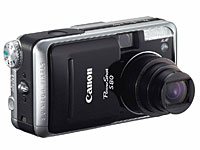 Canon has announced its new PowerShot S80 consumer camera, an eight megapixel compact camera with a wide range of auto and manual controls.
Canon has announced its new PowerShot S80 consumer camera, an eight megapixel compact camera with a wide range of auto and manual controls.
Smaller and lighter than the PowerShot S70 it replaces, the S80 sports a much larger (2.5″) wide viewing angle LCD monitor, a wide-angle 28-100 mm f/2.8-5.3 (3.6x) optical zoom lens which uses the same DIGIC II processor found in Canon’s professional series digital SLRs
The prosumer-targeted camera offers an EOS-style Multi Control Dial for quickly setting menu and shooting functions and nippily scrolling through images during playback.
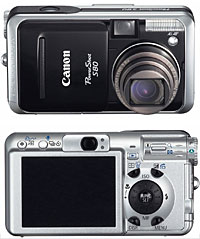 The camera packs in some advanced features including real-time histogram display, FlexiZone AF/AE with a freely movable focus point and manual focus override with 21 shooting modes taking care of most lighting conditions.
The camera packs in some advanced features including real-time histogram display, FlexiZone AF/AE with a freely movable focus point and manual focus override with 21 shooting modes taking care of most lighting conditions.
The new large 2.5″ LCD is adjustable to one of 15 brightness levels and features a “Quick-bright” function for shooting in sunny conditions (sadly, a feature of little benefit to most UK users).
There’s also a handy selectable grid line display to help with composition and keeping wobbly horizons level.
As is the norm for a compact camera, the optical viewfinder can best be described as ‘basic’ with all the shooting image being presented in the LCD screen.
The little fella (104 x 57 x 39 mm) can also record quality video clips up to 1 GB in size, from 320 x 240 at 30/15 fps right up to 1024 x 768 at 15 fps.
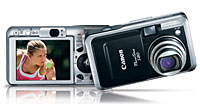 Surprisingly, RAW capture has been left off the spec list, although there’s USB 2.0 compatibility to help speedily transfer images to a PC speedily.
Surprisingly, RAW capture has been left off the spec list, although there’s USB 2.0 compatibility to help speedily transfer images to a PC speedily.
“The PowerShot S80 provides those serious about photography with uncompromising specifications,” gushed Mogens Jensen, Head of Canon Consumer Imaging Europe. “Its futuristic and compact design symbolises Canon’s commitment to pushing the limits of what is possible in this important segment.”
The camera’s 8.0 Megapixel sensor produces images for detailed A3+ size prints, with auto focus speeds claimed to 20% faster.
The S80 is expected to retail for around $549 (£322, €475) when it hits the stores in October 2005.
 Sony and Toshiba have failed to agree on a unified format for next-generation DVDs, according to a Japanese newspaper report today.
Sony and Toshiba have failed to agree on a unified format for next-generation DVDs, according to a Japanese newspaper report today. Japan’s Yomiuri newspaper has reported that the two companies have now abandoned their efforts to develop a unified format, with negotiations falling through after both sides refused to budge.
Japan’s Yomiuri newspaper has reported that the two companies have now abandoned their efforts to develop a unified format, with negotiations falling through after both sides refused to budge.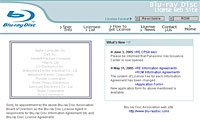 The newspaper report hasn’t been verified by either firm, although both have said that they have not ruled out the possibility of further talks at some point.
The newspaper report hasn’t been verified by either firm, although both have said that they have not ruled out the possibility of further talks at some point. Thanks to Tim for the update on the details of this story
Thanks to Tim for the update on the details of this story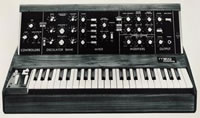 While not the first synth, it became popular as it grabbed musicians attention in its flexibility, enabling them to express themselves.
While not the first synth, it became popular as it grabbed musicians attention in its flexibility, enabling them to express themselves.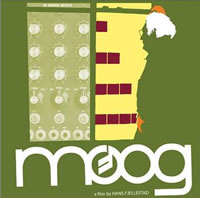 I was lucky enough to see the film Moog, by Hans Fjellestad a couple of week ago and if you haven’t seen it I’d highly recommend that you do. It was clear that Moog was a man who was not only admired by the people around him, but genuinely liked.
I was lucky enough to see the film Moog, by Hans Fjellestad a couple of week ago and if you haven’t seen it I’d highly recommend that you do. It was clear that Moog was a man who was not only admired by the people around him, but genuinely liked.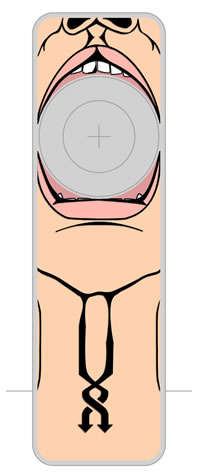 Shortly after the launch of the Apple iPod shuffle, if not simultaneously, manufacturers were quick to jump on the bandwagon by producing and offering thin cases or skins.
Shortly after the launch of the Apple iPod shuffle, if not simultaneously, manufacturers were quick to jump on the bandwagon by producing and offering thin cases or skins. Design your own shuffle cover Shuffle Art Archives is an enterprising Japanese Web site which has assembled collections of designs for decorative stickers that you can apply to your little white pride and joy.
Design your own shuffle cover Shuffle Art Archives is an enterprising Japanese Web site which has assembled collections of designs for decorative stickers that you can apply to your little white pride and joy.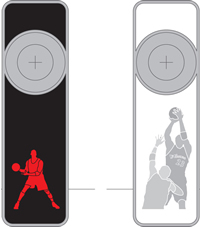 While some people take the simple approach and cover only one face of the player, others are more devoted and produce stickers for
While some people take the simple approach and cover only one face of the player, others are more devoted and produce stickers for 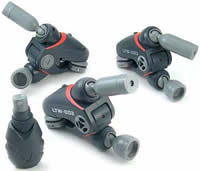 Fancy getting all very Mission-Impossible at home or round about? Concerned that you need to protect yourself against International terrorists, your elder brother or members of a rival spy gang?
Fancy getting all very Mission-Impossible at home or round about? Concerned that you need to protect yourself against International terrorists, your elder brother or members of a rival spy gang?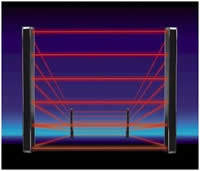 It’s an interesting adoption of technology that is used to protect really rather serious things, like armed fighter planes sitting on a runway and power stations, as
It’s an interesting adoption of technology that is used to protect really rather serious things, like armed fighter planes sitting on a runway and power stations, as 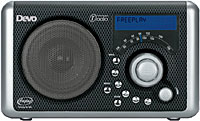 The world’s first wind-up FM and DAB digital radio, the Freeplay Devo, will be on sale in the UK soon.
The world’s first wind-up FM and DAB digital radio, the Freeplay Devo, will be on sale in the UK soon.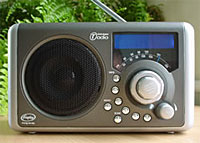 There’s a set of handy stereo RCA (phono) sockets onboard, letting users plug the radio into their home entertainment system, with a built in headphone socket for late night listening.
There’s a set of handy stereo RCA (phono) sockets onboard, letting users plug the radio into their home entertainment system, with a built in headphone socket for late night listening.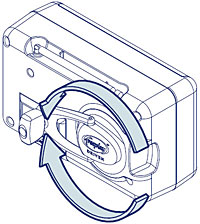 When the batteries run out, a 60-second burst of action on the wind-up lever should reward the user with 3-5 minutes DAB reception or one hour of FM pleasure at normal volume
When the batteries run out, a 60-second burst of action on the wind-up lever should reward the user with 3-5 minutes DAB reception or one hour of FM pleasure at normal volume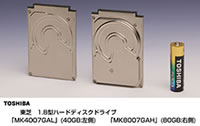 Toshiba claim a first with their release of what they claim is the first commercially released Perpendicular Magnetic Recording (PMR) hard drive.
Toshiba claim a first with their release of what they claim is the first commercially released Perpendicular Magnetic Recording (PMR) hard drive.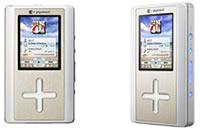 They’re also using the drive to make their Gigabeat music player sexier. The introduction of PMR technology into the Gigabeat F41 not only gives them 40Gb of storage, from a previous 20Gb, but lets them shrink the thickness by 3m.
They’re also using the drive to make their Gigabeat music player sexier. The introduction of PMR technology into the Gigabeat F41 not only gives them 40Gb of storage, from a previous 20Gb, but lets them shrink the thickness by 3m.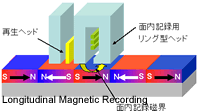 How does it work its magic? Today’s drives typically use Longitudinal Magnetic Recording (LMR). In simple terms, the difference between the two is LMR has the magnetic field pointing either left or right, while PMR has them pointing up or down. This helps to achieve higher and more stable recording densities, and in turn improves storage capacity. The images from Toshiba should help make it a bit clearer (if you happen to speak Japanese).
How does it work its magic? Today’s drives typically use Longitudinal Magnetic Recording (LMR). In simple terms, the difference between the two is LMR has the magnetic field pointing either left or right, while PMR has them pointing up or down. This helps to achieve higher and more stable recording densities, and in turn improves storage capacity. The images from Toshiba should help make it a bit clearer (if you happen to speak Japanese). While the theory of PMR has been around for a number of years, Toshiba has taken 1-2 quarters longer than they’d expected in getting the MK4007GAL to market.
While the theory of PMR has been around for a number of years, Toshiba has taken 1-2 quarters longer than they’d expected in getting the MK4007GAL to market.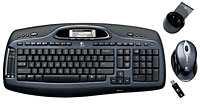 It could be argued that a keyboard’s beauty lies in its simple elegance. No flashing lights, no blinking screens, no whirring eye candy, just several rows of dumb keys obediently awaiting your input.
It could be argued that a keyboard’s beauty lies in its simple elegance. No flashing lights, no blinking screens, no whirring eye candy, just several rows of dumb keys obediently awaiting your input.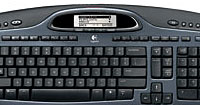 The MX5000 reflects the trend which sees dumb-as-a-rock keyboards slowly turning into smartypants devices, capable of both sending and receiving info from the computer and, in this case, even acting as a Bluetooth 2.0 Enhanced Data Rate (EDR) wireless hub.
The MX5000 reflects the trend which sees dumb-as-a-rock keyboards slowly turning into smartypants devices, capable of both sending and receiving info from the computer and, in this case, even acting as a Bluetooth 2.0 Enhanced Data Rate (EDR) wireless hub.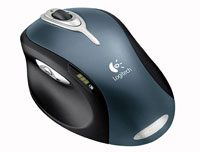 “The Logitech Cordless Desktop MX 5000 Laser desktop pushes that information to a peripheral screen so that people can choose when to glance at their notifications and status information, and can therefore clear their monitors — and their minds,” he added.
“The Logitech Cordless Desktop MX 5000 Laser desktop pushes that information to a peripheral screen so that people can choose when to glance at their notifications and status information, and can therefore clear their monitors — and their minds,” he added.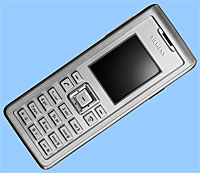 Following hot on the heels of Vodafone’s successful stripped-down phone
Following hot on the heels of Vodafone’s successful stripped-down phone 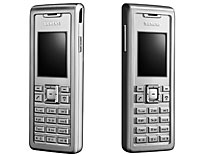 Simple doesn’t have to mean crap though, and the thin and light phone offers a 65k colour display, SMS and MMS with an innovative button on the side of the phone allowing a MMS voice message to be recorded easily.
Simple doesn’t have to mean crap though, and the thin and light phone offers a 65k colour display, SMS and MMS with an innovative button on the side of the phone allowing a MMS voice message to be recorded easily.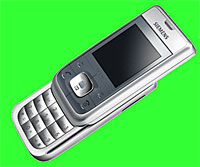 Siemens have also announced their new CF110 slim slider phone.
Siemens have also announced their new CF110 slim slider phone.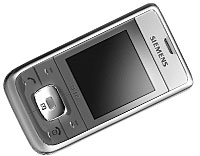 The CF110 is also something of a frill-free affair, with no camera, Bluetooth or music playback functionality onboard.
The CF110 is also something of a frill-free affair, with no camera, Bluetooth or music playback functionality onboard.